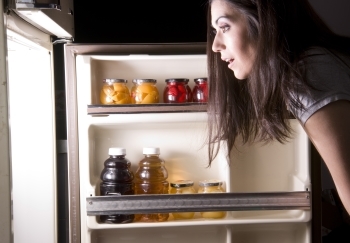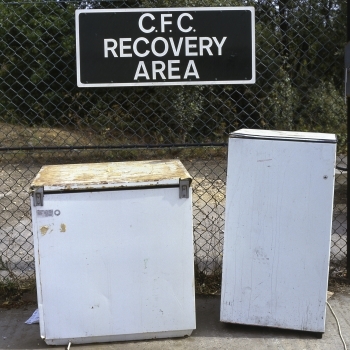 During a hot day, have you ever tried to cool yourself down by squirting yourself with a spray bottle or by walking into a fine mist of water? This is due to the fact that when water on your skin evaporates it takes a little bit of the surface heat with it, which basically forms the entire basis of why humans sweat when overheated. It’s also the basic principle by which refrigeration or cold storage functions; however instead of liquids most refrigerated containers use gas.
During a hot day, have you ever tried to cool yourself down by squirting yourself with a spray bottle or by walking into a fine mist of water? This is due to the fact that when water on your skin evaporates it takes a little bit of the surface heat with it, which basically forms the entire basis of why humans sweat when overheated. It’s also the basic principle by which refrigeration or cold storage functions; however instead of liquids most refrigerated containers use gas.
Why use gas for refrigeration?
In older refrigerated containers this effect was done with coiled tubes filled with Freon gas. Be aware that Freon is actually a brand name rather than the name of the gas itself.
For science buffs, the actual scientific name for the gas used in these fridges was chlorofluorocarbon or CFC for short. The gas started out in liquid form and ran along the pipes at the back of the fridge in the freezer area, where it becomes a vapour and its frigidly cold temperatures would sap heat from the interior air. In the regular sections of the fridge there are fewer coils and less space, which means less heat is being soaked up. After that, the CFC vapour is forced into thinner pipes along the outside of the fridge, often within the back.

Because it’s being compressed, the CFC is forced back into a liquid form and releases its heat energy into the surrounding area. That’s why it’s often rather cosy behind the fridge and why small pets may be found hiding behind them if they can squeeze in.
Gas cools as it expands, after all, and thanks to the Laws of Thermodynamics, we know that when a warm object and a cool object are placed next to each other, the warm object grows cooler while the second object grows warmer. Bigwig scientists call this process thermal conduction. This is the driving mechanic behind the workings of any good refrigerator. There have been a number of ways to get this effect in cold storage.
The Problem with CFC’s
 The problem with CFC, as it was later found out, was that they proved to be highly damaging to the environment. Principally, CFCs are corrosive to the ozone layer, the latter of which forms a protective barrier against harmful UV rays from the sun. This is why older refrigerated container models need to be disposed of in certain ways, so as to prevent CFCs gases escaping into the atmosphere. Consequently, modern refrigerated containers use an alternative gas called HFC-134a, otherwise known as tetraflouroethane. It works very much the same way as older refrigerators do, using a process of boiling and condensing to remove heat from the inside of the fridge and releasing it outside.
The problem with CFC, as it was later found out, was that they proved to be highly damaging to the environment. Principally, CFCs are corrosive to the ozone layer, the latter of which forms a protective barrier against harmful UV rays from the sun. This is why older refrigerated container models need to be disposed of in certain ways, so as to prevent CFCs gases escaping into the atmosphere. Consequently, modern refrigerated containers use an alternative gas called HFC-134a, otherwise known as tetraflouroethane. It works very much the same way as older refrigerators do, using a process of boiling and condensing to remove heat from the inside of the fridge and releasing it outside.
Keeping your fridge cold
But how do they stay cold? How does it recognise when the interior is getting too warm? Conversely, how does it stop the fridge getting too cold or using up electricity? Well all fridges contain a nifty little gizmo called a thermocouple -- it’s easier just to think of it as a thermometer -- which basically monitors the interior temperature. If the thermocouple senses that the fridge has reached its intended temperature, it shuts off power to the fridge’s compressor. Because the refrigerator is not completely sealed, heat does eventually start to seep into the interior. Once the thermocouple sense that the fridge has gotten too warm, it boots the compressor back up and restarts the refrigeration process. This is why you’ll hear fridges humming, then going silent and then humming again at seemingly random intervals. This process also saves you a great deal amount of energy.












